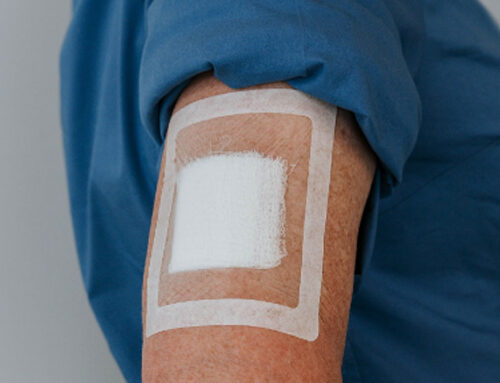Medical Adhesive Related Skin Injuries (MARSI) occur when superficial layers of skin are damaged when applying and removing adhesive dressings. This condition hampers the healing process by causing further damage and increasing the risk of infection. While MARSI affects all patient groups, they appear to be closely related to a patient’s age and skin condition, in particular seniors and the very young:
- A nursing home-based study in the United Kingdom concluded that 98.6% of registered nurses considered skin tears “common” and “extremely common” among their senior patients.
- Wounds International reported that 1.5 million skin tears occur each year in elderly patients in long-term senior care facilities in the US.
- 17 percent of patients in neonatal care have to be treated for MARSI.
Before we move on to the various types of MARSI, read our blog post for healthcare professionals who want to prevent and treat this skin condition.
Types of MARSI
Treatment requires diagnosis, and clinicians should be aware of the various MARSI classifications and symptoms:
1. Mechanical MARSI
These wounds occur when subpar medical adhesive dressings irritate or damage the skin or damage during application or removal.
- Skin (epidermal) stripping: Superficial skin layers can be stripped by the removal of an adhesive bandage, often making the skin’s surface appear shiny.
- Tension injury or blister: These typically occur at the ends or edges of an adhesive dressing that’s been applied with too much tension. This tightness can cause the epidermis to separate from the dermis, resulting in painful blisters that prolong recovery time for the patient.
- Skin tears: Lacerations or bruises caused by friction, pressure, or blunt force that separate skin layers from one another.
2. Dermatitis MARSI
Reactions caused by extrinsic factors such as an allergic response to adhesive dressing or irritant chemicals coming into contact with the skin.
- Irritant contact dermatitis: With symptoms including swelling, weeping, and blistering, this type of MARSI is non-allergic and caused by chemical compounds or skin preparations that get stuck between the adhesive dressing and the skin.
- Allergic dermatitis: An allergic reaction to the adhesive or backing of an applied dressing that causes inflammation, itching, and skin redness.
3. Other types of MARSI
- Maceration: If the skin is exposed to moisture for an extended period, it will soften, wrinkle, and change to a shade of white or gray. Macerated skin is susceptible to damage and irritation because it’s more permeable and sensitive.
- Folliculitis: Shaving the immediate area around the wound promotes hygiene and makes adhesive dressing more effective. Every now and then, however, a follicle takes offense and becomes inflamed, or trapped bacteria irritates the skin and causes localized inflammation and small bumps.
There are many other factors that contribute to MARSI, such as bad nutrition, dehydration, and certain medications. That said, if a clinician is armed with the right tools and knowledge, they can effectively nip it in the bud.
Prevent MARSI before having to cure it
Every year, millions of injuries are associated with adhesive bandage removal in the U.S. alone. This is especially problematic for at-risk pediatric and geriatric populations. To help address this issue, Comfort Release® has created a patented adhesive for bandages, dressings, and tapes that can be removed and reapplied quickly and easily — without damaging sensitive skin. Our range of products are:
- Replaceable, adjustable, and easy to remove
- Water-resistant and breathable
- Skin-friendly and long-lasting (up to three days)
Try a free sample and feel the difference Comfort Release® makes for patients with skin issues. For more information on the protection of vulnerable skin and the prevention of MARSI, browse our product range.


